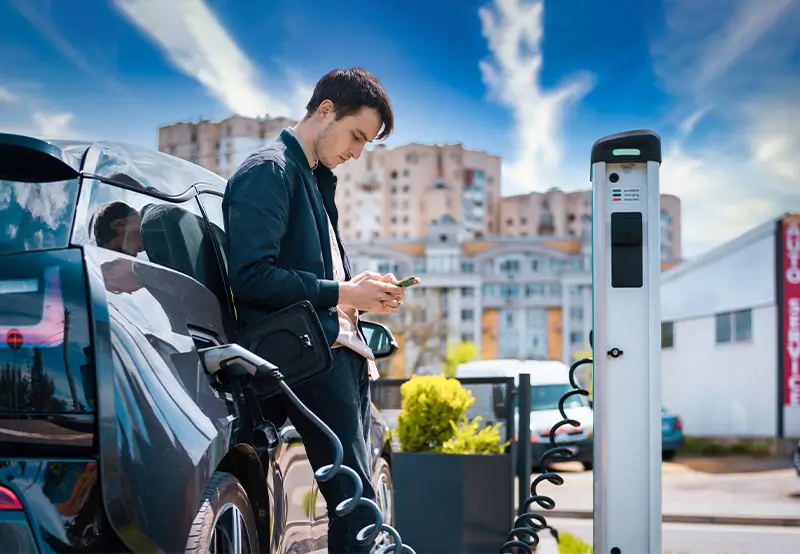Public EV Charging vs. Home Charging: Why the Big Price Gap?
With the quickening adoption rate of electric vehicles (EVs), charging networks have been the most discussed topic among EV owners and potential buyers. One of the most common questions is the huge difference in price between public EV charging stations and home EV charging systems. Why should it cost so much to charge an EV in public as opposed to at home? The solution is found in a mixture of investment in infrastructure, convenience, operating costs, and market-based charging.

To understand the cost difference between public EV charging stations and home EV charging systems, it is essential to move beyond some of the most important variables, such as the cost of electricity, the efficiency of EV power consumption, and the highly capital-expensive costs associated with implementing and sustaining public EV charging station infrastructure. In this article, we will be breaking these down, examining the economics of EV charging, and assisting you in making the correct charging strategy decision for your purposes.
What Determines EV Charging Costs?
Electric vehicle chargers have multiple factors which affect the cost of charging an electric vehicle; these factors range between the electricity rates and the kind of charging station. The key contributors of cost are as follows:
1. Electricity Rates and Tariffs
- The cost of charging at home depends mainly on the residential electricity rates that differ depending on place of residence and utility company.
- Public EV charging stations, on the other hand, incorporate additional fees for infrastructure maintenance, network connectivity, and peak demand charges.
2. Charging Speed and Power Consumption
- Home EV charging systems generally use Level 1 or Level 2 chargers, which take longer to charge but are more cost-effective.
- Public chargers may offer Level 3 (DC fast charging) often due to its ability to greatly decrease the charging time at the cost of higher power demands and total cost.
3. Infrastructure Costs
- There are installation licenses, permits, outdoor parking places, and maximum capacity transformers that make up a high pricing of the public charging stations.
- Home EV charging systems, once installed, involve minimal additional costs aside from regular electricity consumption.
4. Service Fees and Business Models
- A large number of networks involve payment where many EV charging services are available on a subscription or pay-per-use basis, which integrates services fee to offset business costs.
- Since home charging is usually a fixed cost depending on the rate charged by your local electricity provider, it is predictable, and it is also budget friendly.
Why is Public EV Charging More Expensive?
The following are the main causes of the price difference between home and public EV charging systems:
1. EV Charging Station Infrastructure Costs
Installing and servicing of the public charging infrastructure is expensive both initially and long-term. These are purchasing land, improvement of electric grid, internet connections, and payment and availability management software. Businesses that operate public EV charging stations pass these costs onto consumers through higher per-kWh pricing.
2. Convenience and Demand-Based Pricing
Public EV charging stations offer the advantage of fast charging in convenient locations, such as highways, shopping centers, and workplaces. Due to their prime locations and high demand, pricing often reflects the convenience factor, much like fuel stations do for gasoline-powered vehicles.
3. Commercial Electricity Rates and Peak Demand Charges
The commercial users are charged more than domestic users particularly at peak hours. The commercial energy suppliers usually add on some demand charge which is pegged at the times when the maximum amount of electricity is being used during a billing period. As EV chargers require a lot of power, such demand charges affect the total costs of delivering public charging a lot.
Is Home Charging the Best Option?
Home charging is by far the most affordable and comfortable charging possibility among the majority of EV owners. A home EV charging system allows for overnight charging, taking advantage of lower electricity rates and avoiding peak-hour surcharges. While the initial installation of a home charging system requires an upfront investment, the long-term savings on EV charging costs make it the preferred choice for many drivers.
Conclusion
The gap in price between public EV charging points and residential EV charging systems is due to the cost of infrastructure, demand pricing, and electricity costs. While public charging is an imperative for long-distance travel, home charging offers a cheaper and more convenient alternative for daily use. It is possible to know the most important factors influencing the cost of EV charging in order to inform the decisions of EV owners and enable them to optimize their savings over the long term.
Frequently Asked Questions (FAQs)
The cost of charging an EV at home depends on local electricity rates and the vehicle’s battery size. On average, charging an EV at home costs between $0.10 and $0.20 per kWh, resulting in a full charge expense of around $5 to $15, depending on battery capacity.
Public EV charging stations incorporate infrastructure costs, maintenance fees, demand charges, and convenience pricing, making them significantly more expensive than home charging.
Most home EV charging systems are Level 2 chargers, which are faster than standard Level 1 outlets but not as rapid as DC fast chargers found at public stations.
EV power consumption depends on driving conditions, battery efficiency, charging speed, and the vehicle’s onboard energy management system.
Many governments and utility providers offer rebates and tax credits to offset the cost of installing a home charging station, making it an even more attractive option for EV owners.












